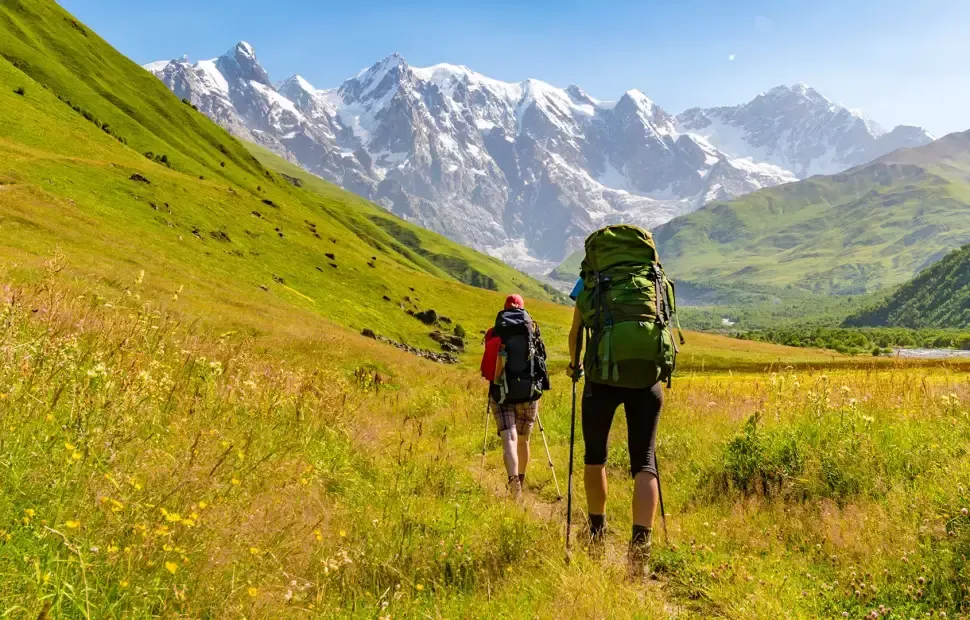If you're wondering what is trekking and how to embark on your own adventure, The National Park Shops has everything you need to get started. From essential gear to expert advice, we help outdoor enthusiasts explore the world's most beautiful landscapes with confidence. This guide will explain what is trekking, the benefits it brings to mind and body, and the essential gear you’ll need for every journey. Whether you're planning a day trek or a multi-day expedition, understanding what is trekking is your first step toward an unforgettable outdoor experience.?
What is trekking?
Trekking is an adventurous outdoor activity that involves walking long distances through natural landscapes, often in mountainous or remote areas. When people ask "what is trekking", they are referring to a journey on foot that can range from a single day to several weeks, requiring endurance and preparation. Unlike casual hiking, trekking typically involves more challenging terrains and varying altitudes that test both mental and physical stamina. Understanding what is trekking includes recognizing that it is as much about the journey as the destination. It offers an immersive experience where trekkers engage deeply with nature, local cultures, and their personal limits.
When learning what is trekking, it’s important to differentiate it from other outdoor activities like mountaineering or backpacking. Trekking doesn’t necessarily aim for summits but focuses on the enjoyment of the trail itself and the natural beauty along the way. People undertake treks across forests, deserts, and high-altitude passes, each presenting its own set of challenges and rewards. Whether it's a solo trek or a group expedition, understanding what is trekking helps set expectations and prepare adequately. At its core, trekking is about exploration, resilience, and appreciation of the great outdoors.
Many people discover what is trekking through organized trekking tours in popular destinations like the Himalayas, Andes, or Alps. These treks often follow well-known routes with established campsites and waypoints. However, trekking can also be a self-guided adventure, where the trekker charts their own course and schedules. By learning what is trekking, individuals can tailor their experiences to match their fitness levels, interests, and travel goals. Trekking remains one of the most rewarding ways to connect with nature and test personal endurance.
>> Read More: The 10 Best Climbing Backpacks for Travelers (Tested)
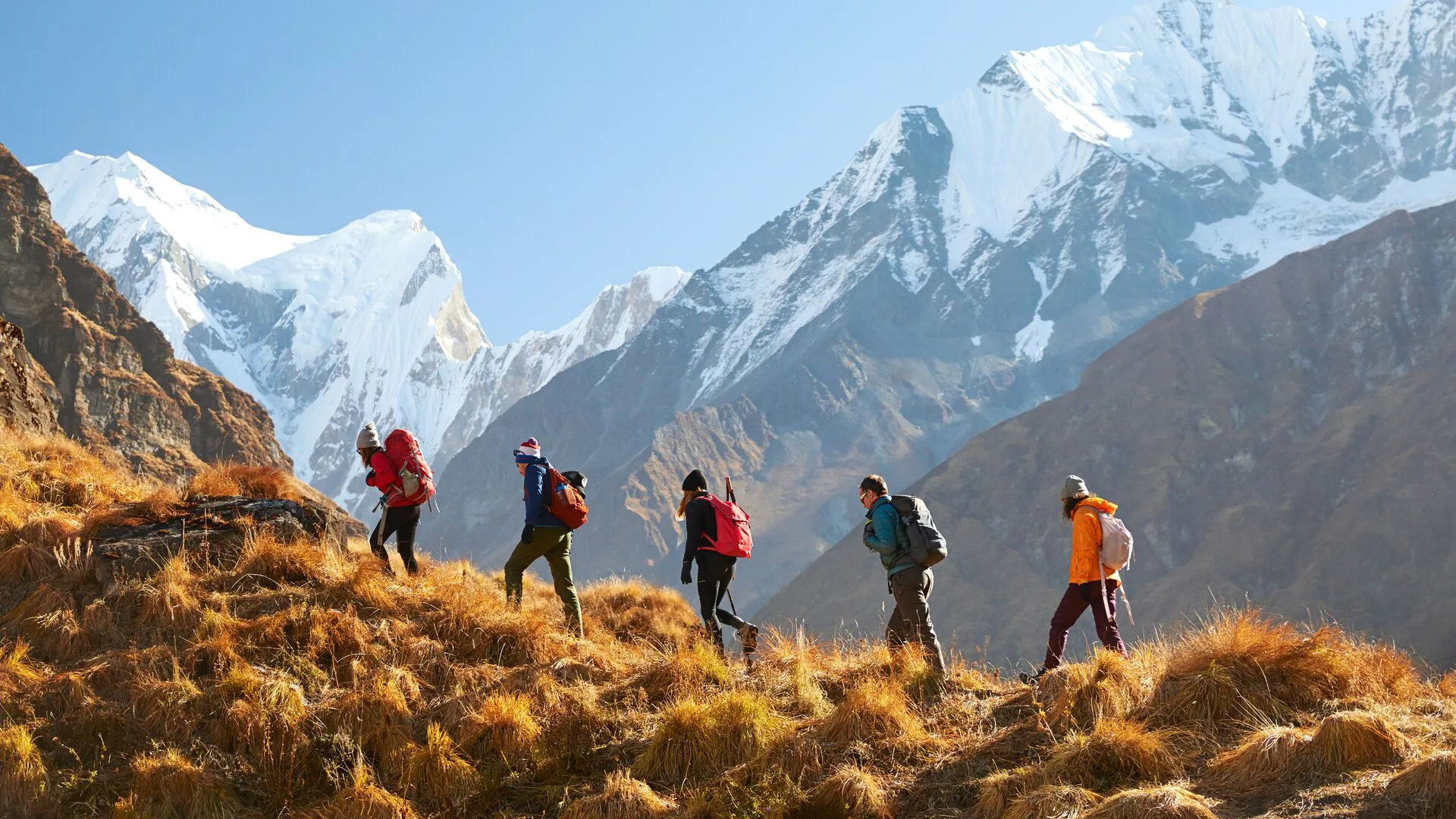
What are the benefits of Trekking?
When you explore what is trekking, you quickly discover that its rewards go far beyond scenic trails and fresh air. Trekking improves your well-being holistically, blending physical, mental, and social benefits in one fulfilling activity. People who ask what is trekking often find the answer in the way it strengthens both body and mind. Let’s dive into the many ways trekking enriches your life.
Physical Health
A major benefit when exploring what is trekking is the improvement of overall physical health. Trekking is a full-body workout that strengthens muscles, improves cardiovascular endurance, and enhances balance and coordination. As you navigate rugged trails, your body adapts to uneven surfaces and changing elevations. Understanding what is trekking highlights how this activity burns calories and helps maintain a healthy weight. Regular trekking boosts stamina and prepares the body for other physical activities.
Beyond muscle development, those asking what is trekking will find that it supports bone density and joint flexibility. Carrying a backpack during treks also strengthens core muscles and improves posture. Cardiovascular benefits include lower blood pressure and better heart health. Recognizing what is trekking underscores its role in promoting a healthy, active lifestyle. Whether done weekly or seasonally, trekking provides substantial physical rewards.
Mental Well-being
In addition to physical benefits, those learning what is trekking gain insight into its positive impact on mental health. Spending time in nature reduces stress, anxiety, and symptoms of depression. Trekking offers moments of solitude and reflection, allowing participants to disconnect from daily pressures. Understanding what is trekking reveals how outdoor activities improve mood through the release of endorphins. Many find that trekking clears their minds and enhances overall emotional resilience.
Engaging with natural landscapes offers a mental reset that promotes mindfulness and gratitude. The act of navigating trails and reaching new destinations builds confidence and self-esteem. Exploring what is trekking shows that these mental health benefits extend beyond the trail, improving daily coping skills. Many trekkers return from their adventures with renewed energy and purpose. Trekking is not only a physical journey but also a pathway to emotional well-being.
>> Read More: 11 Benefits of Hiking for Health and More
Social Connection
For those wondering what is trekking, it's important to recognize the social connections it fosters. Trekking can be a deeply communal activity, whether shared with friends, family, or fellow adventurers met along the trail. Collaborative challenges, shared meals, and campfire conversations create lasting bonds. Understanding what is trekking highlights the sense of camaraderie that naturally develops in group treks. These social experiences add a rich layer of meaning to the adventure.
Participating in guided treks allows individuals to meet like-minded people from around the world. Those learning what is trekking soon discover that many treks support community-based tourism, promoting cultural exchanges with local populations. Social interactions on the trail enhance the overall trekking experience and provide opportunities for personal growth. Whether you prefer solitude or group dynamics, trekking offers space for connection. The friendships formed during treks often last a lifetime.
>> Read More: What To Do If Lost Hiking - Here's What You Need to Know
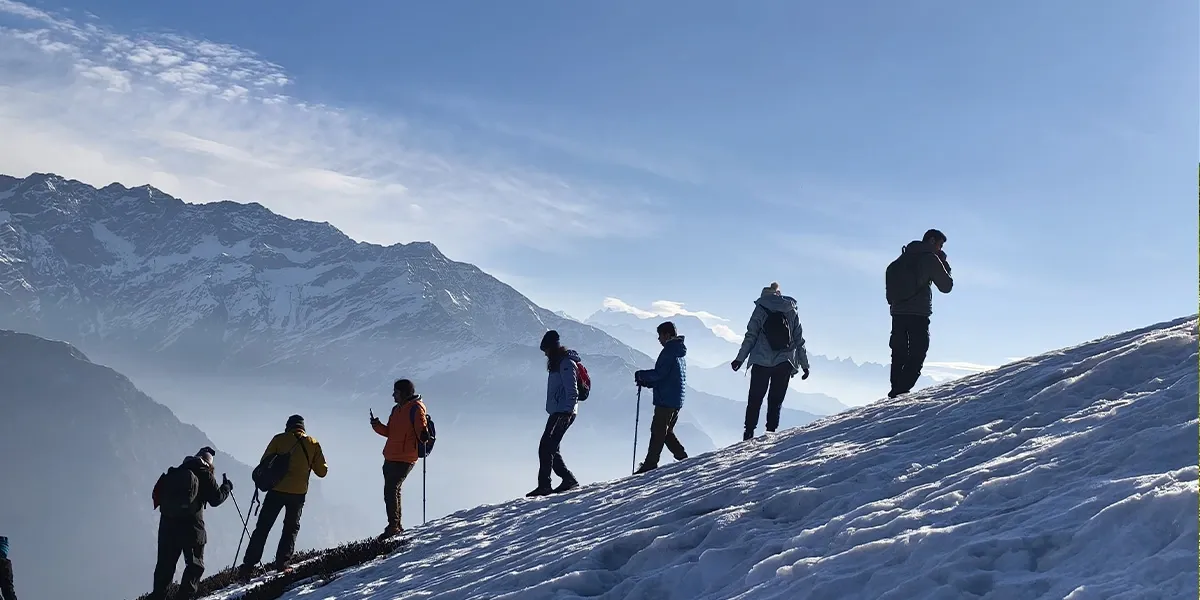
How to prepare for a Trekking?
Preparation is key to mastering what is trekking and ensuring a successful journey. Start by assessing your current fitness level and creating a training plan that includes cardio, strength training, and endurance exercises. Conditioning your body to carry a loaded backpack will help prevent injury. Understanding what is trekking involves researching your chosen route, including the terrain, climate, and elevation changes. Preparation builds confidence and reduces the risk of unpleasant surprises.
Next, gather the necessary gear tailored to your trek’s difficulty and length. Knowing what is trekking emphasizes the importance of selecting quality footwear, clothing, and navigation tools. Practice packing efficiently to balance weight and essential supplies. Additionally, learn basic first aid and emergency procedures to enhance your safety on the trail. Being well-prepared transforms what is trekking from a challenge into a rewarding adventure.
Mental preparation is equally important when understanding what is trekking. Prepare for unpredictable weather, physical discomfort, and mental fatigue. Setting realistic goals and maintaining a positive mindset can help you persevere through difficult moments. Trekking demands adaptability and problem-solving skills, so being mentally ready is as vital as physical preparation. Overall, the more you prepare, the more you will enjoy what is trekking.
What are the types of Trekking?
Day Treks
When asking what is trekking, beginners often start with day treks. These short, single-day hikes require minimal gear and are perfect for testing your endurance and enjoying nature. Day treks typically follow well-marked trails and offer opportunities for exploration without the need for overnight camping. Understanding what is trekking through day treks allows individuals to build confidence and stamina gradually. They are ideal for weekend adventures and spontaneous outdoor escapes.
Day treks can be tailored to various fitness levels, ranging from easy forest walks to challenging mountain climbs. Knowing what is trekking helps trekkers choose trails that match their experience and goals. These short treks are also a great way to introduce friends and family to outdoor activities. They require less preparation, making them accessible for beginners. Day treks serve as the gateway for discovering what is trekking.
>> Read More: How to Choose Maps for Climbing: 8 Effective Ways
Multi-Day Treks
Multi-day treks represent a deeper dive into what is trekking, offering extended journeys that span two days to several weeks. These treks require careful planning, including accommodations in tents, huts, or lodges. Understanding what is trekking at this level involves managing food supplies, navigation, and weather changes over multiple days. The experience is more immersive, allowing trekkers to explore remote landscapes and cultural sites. Multi-day treks challenge endurance and resilience.
Popular multi-day treks like the Inca Trail or Everest Base Camp Trek exemplify what is trekking for experienced adventurers. These treks often include high-altitude routes and rugged terrain, demanding both physical and mental strength. Preparation becomes critical to ensure a safe and enjoyable journey. Multi-day treks allow participants to fully disconnect from daily life and embrace the simplicity of nature. They represent the essence of what is trekking for many enthusiasts.
>> Read More: Hiking Alone Safety Tips: How To Protect While Solo Hiking
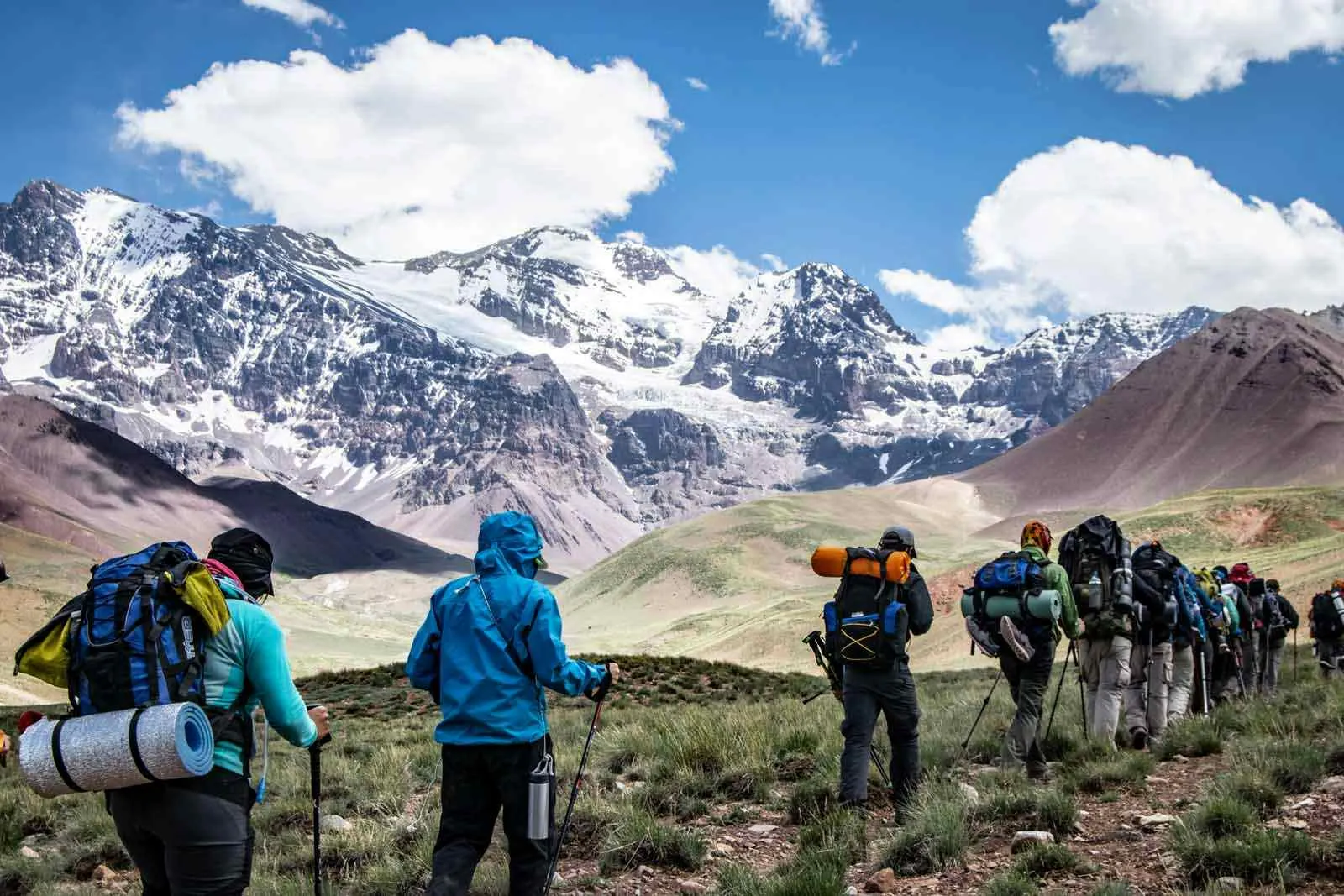
Themed Treks (Wildlife, Cultural)
Themed treks add a unique dimension to what is trekking by incorporating specific interests like wildlife observation or cultural exploration. Wildlife treks lead adventurers through habitats rich with biodiversity, offering opportunities to spot rare species. Cultural treks explore historic trails and ancient villages, connecting trekkers with local traditions and heritage. Understanding what is trekking reveals the wide variety of experiences available beyond the physical journey.
These themed treks often include guided tours by experts who provide educational insights along the way. For those curious about what is trekking, themed treks offer a more curated and meaningful adventure. Whether tracking wildlife in Africa or exploring Buddhist monasteries in Nepal, these treks deepen your appreciation of the natural and cultural world. Themed treks cater to niche interests while still offering the physical and mental benefits of trekking. They showcase the diversity of what is trekking as an outdoor pursuit.
Trekking Essentials: Hiking Boots and Gear
One of the first steps when learning what is trekking is preparing the right gear. Comfortable hiking boots are essential to support your feet on uneven trails. Look for boots that are waterproof, breathable, and properly broken in. Wearing moisture-wicking socks with your boots helps prevent blisters and keeps your feet dry.
Beyond boots, essential trekking gear includes:
-
A durable backpack for carrying supplies,
-
Weather-appropriate clothing for sun, rain, or cold,
-
Navigation tools like a map or GPS,
-
Hydration systems such as water bottles or bladders,
-
Safety items like trekking poles, headlamps, and a first aid kit.
Understanding what is trekking means learning to pack light but smart, taking only what you'll truly need. Also, choose your gear according to the terrain and weather, deserts, jungles, and snowy mountains each require different preparation. Test your gear on short practice hikes to ensure everything works well. With the right equipment, what is trekking becomes a safe, enjoyable, and memorable adventure.
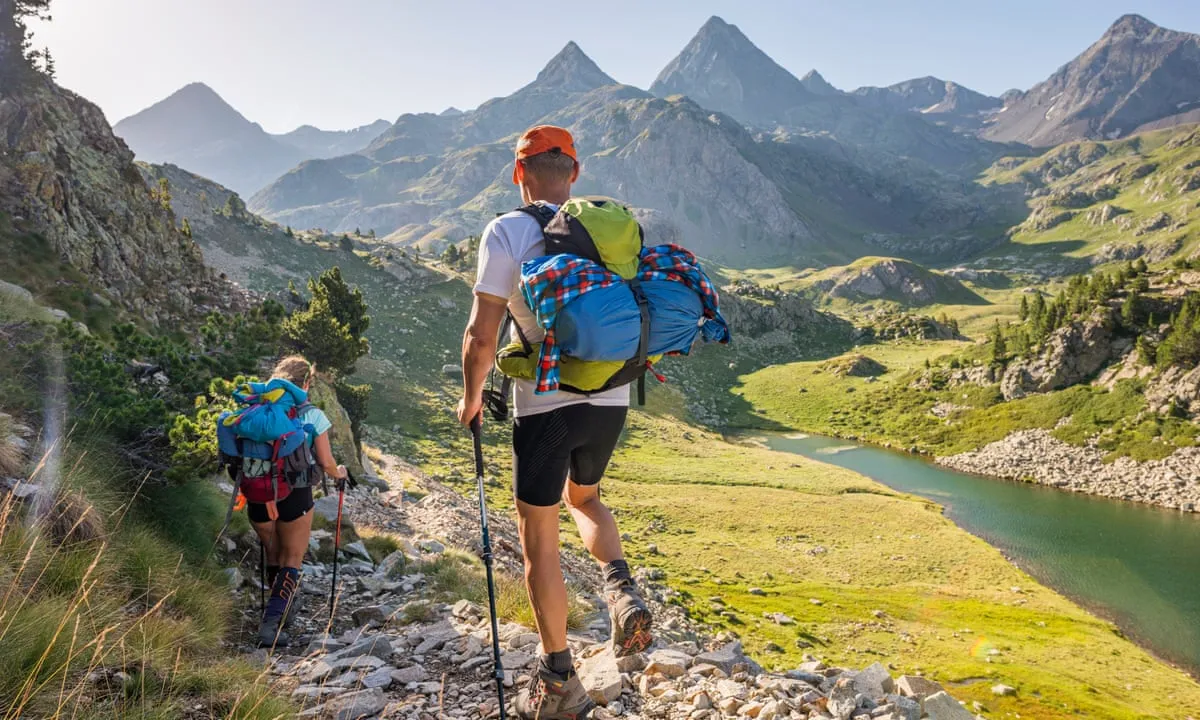
A Beginner’s Guide to Trekking
For beginners wondering what is trekking, it's best to start with simple steps to ease into the activity. Start with manageable trails that are easy to follow and gradually build your skills and confidence as you go. Focus on learning how your body responds to different terrains and distances to avoid fatigue and injury. Understanding what is trekking as a beginner means prioritizing comfort, safety, and enjoyment rather than pushing your limits. Starting slow ensures a positive first experience that encourages future adventures.
Here are some beginner-friendly tips to help you get started:
-
Choose well-marked routes: Look for trails with clear signage and minimal elevation gain.
-
Invest in basic gear: Essentials include sturdy shoes, layered clothing, and a lightweight daypack.
-
Hike with experienced friends: Or consider joining beginner-friendly guided treks for support.
-
Learn outdoor basics: Such as map reading, basic first aid, and Leave No Trace principles.
-
Progress gradually: Start with short treks and increase the distance and difficulty as your confidence grows.
By following these steps, you'll discover what is trekking as a rewarding and accessible outdoor hobby.
FAQs
How do I choose the right trek for my skill level?
When learning what is trekking, choose a trek that suits your fitness level and experience. Start by assessing your health, then research the trail's difficulty, elevation, and distance. If you're unsure, guided treks provide extra safety and convenience. Some trails suit beginners, while others demand higher endurance and skill. The right trek should be challenging but within your ability. Watch for factors like altitude, terrain, and weather conditions. Start with easy treks and gradually take on more difficult routes as your confidence builds. Thoughtful preparation ensures that your journey of what is trekking is both safe and rewarding.
Are trekking poles necessary, and how do I use them effectively?
Trekking poles are not required but can help improve stability and reduce joint strain, especially on uneven terrain. When learning what is trekking, many beginners find that poles make walking easier and safer. They help distribute weight and improve balance on steep or rocky trails. Using poles effectively means adjusting them to your height and practicing your walking rhythm. Overall, they are a useful tool for comfort on longer or more difficult treks.
Can I trek solo, or is it better to join a guided group?
When learning what is trekking, many people wonder whether to trek solo or join a guided group. Trekking solo gives you freedom and flexibility but requires thorough preparation and self-sufficiency. Guided groups, on the other hand, offer safety, expert support, and social connections along the trail. The choice depends on your experience, destination, and personal comfort. Beginners or those trekking in unfamiliar areas often benefit from guided groups. No matter the choice, what is trekking remains a rewarding adventure that suits your own style and needs.
>> Read More:

